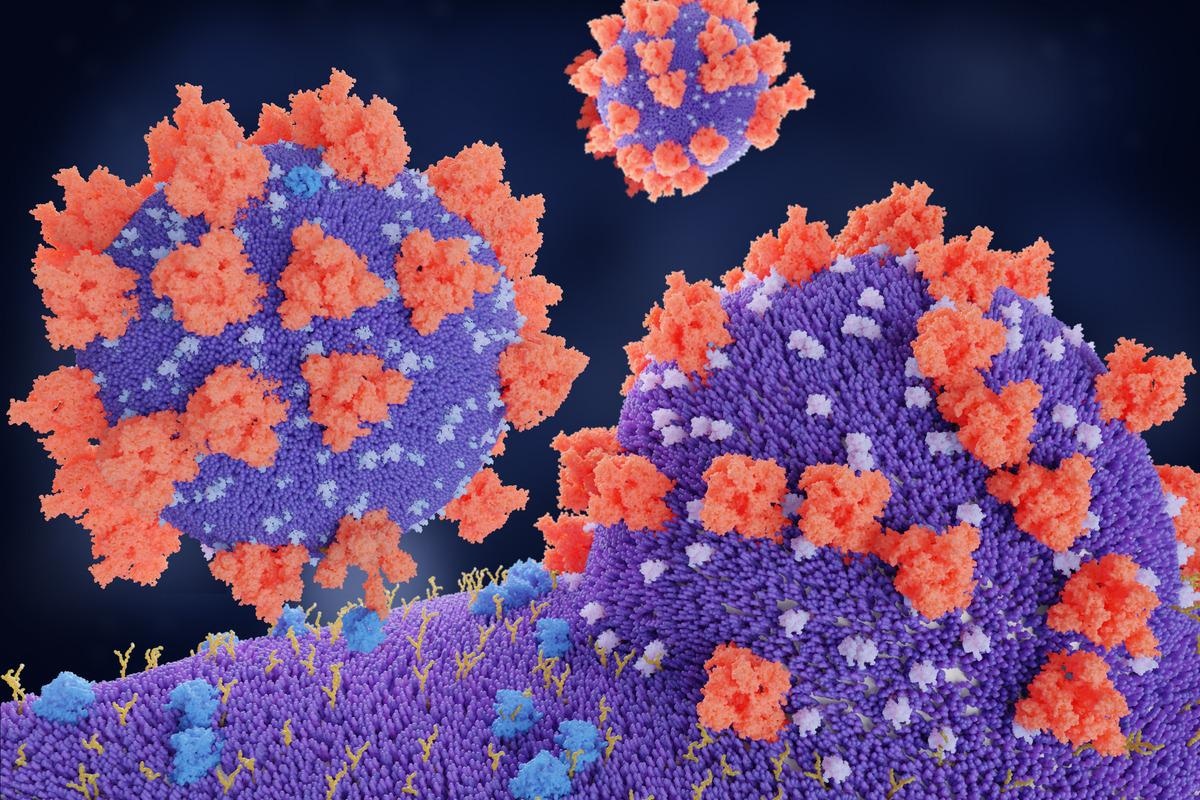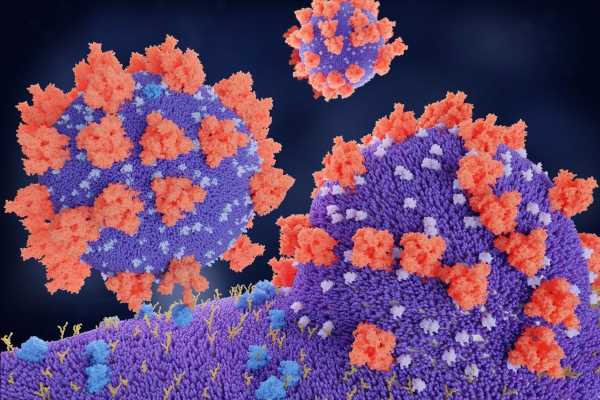In a recent study posted to the bioRxiv* preprint server, researchers assessed the interactions between severe acute respiratory syndrome coronavirus 2 (SARS-CoV-2) and angiotensin-converting enzyme-2 (ACE2).

Background
Coronavirus disease 2019 (COVID-19) is caused by SARS-CoV-2, which infects cells by attaching to their angiotensin-converting enzyme 2 (ACE2) receptor. While the structural aspect of the SARS-CoV-2 spike (S) protein is thoroughly studied, research is required to understand the physicochemical mechanism of SARS-CoV-2 S-ACE2 interactions.
About the study
In the present study, researchers characterized the molecular association between the S proteins belonging to SARS-CoV-2 variants of concern (VOCs) and ACE2.
The team compared the binding profiles of the receptor-binding domain (RBD) from the SARS-CoV-2 Wuhan strain and various VOCs. Real-time profiles were used to assess the association and dissociation sections of the binding process. The team also estimated the binding kinetics and the equilibrium affinity in the case of interactions between RBDs belonging to the Wuhan strain and the VOCs with ACE2.
The energy changes incident during the interaction between ACE2 and RBD were estimated by applying Arrhenius plots to evaluate the activation thermodynamics. Furthermore, the Van’t Hoff plot was used to characterize the impact of temperature on the equilibrium association constant. The team also performed pH-dependent analyses on RBD binding of different SARS-CoV-2 variants to immobilized ACE2.
Results
The study results showed clear variations between the temperature sensitivities exhibited by the SARS-CoV-2 Wuhan strain and several VOCs with respect to their interaction with ACE2. Real-time profiling revealed that the relationship between Wuhan RBD with ACE2 had significantly high-temperature sensitivity. Moreover, the team noted that the binding response progressively declined as a function of the temperature. This reduction also changed the shape of the binding curves, indicating that the temperature remarkably affected the binding kinetics of the Wuhan RBD.
Furthermore, the interaction profiles displayed by the SARS-CoV-2 Alpha, Beta, Gamma, and Delta VOCs also had high sensitivity to temperature. However, the effect of this temperature sensitivity affected their binding profiles differently. In contrast, the impact of temperature was the most distinct in the interaction of Omicron RBD with ACE2. Overall, this suggested that the Omicron RBD used a different molecular mechanism when binding to ACE2.
Evaluation of binding kinetics showed that temperature significantly impacts the association rate constant for all the RBD variants. However, the association rate constant for Omicron RBD displayed comparatively distinct characteristics. Thus, except for the Omicron RBD, an increase in the interaction temperature led to a substantial reduction in the association rate constant to different magnitudes for each viral variant. On the other hand, higher interaction temperature showed increased RBD-ACE2 binding for the SARS-CoV-2 Omicron VOC. Moreover, the rapid association of RBD-ACE2 interaction was correlated to Omicron RBD across various temperatures.
The team observed that the Arrhenius plot for the association phase showed the uniqueness of the responses of the Omicron RBD in comparison to the other VOCs. The plot allowed the estimation of the activation charges that characterized association and dissociation as well as the parameters related to activation thermodynamics. Analysis of the plot showed that interactions between the Wuhan and VOCs RBDs and ACE2 had similar patterns of variation in the thermodynamic parameters during association.
The equilibrium thermodynamic data showed that the evolution of SARS-CoV-2 led to significant changes in the molecular mechanism associated with ACE2 binding. Furthermore, in contrast to the Wuhan and VOCs RBDs, the Omicron RBD employed a qualitatively distinct mechanism of recognizing its associated ligand. The observed thermodynamic variations showed that the Omicron VOC associated with ACE2 had a significantly lesser penalty due to its molecular structure.
pH-dependent analyses revealed that a bell-shaped binding curve characterized RBD-ACE2 interactions. The team noted that the RBD of the Wuhan strain and the VOCs displayed similar pH dependency for ACE2 binding. However, Omicron RBD had significantly higher sensitivity to pH in the acidic range. Furthermore, RBDs of all the SARS-CoV-2 variants behaved similarly in the basic range.
The team also noted that the SARS-CoV-2 S protein tended moderate binding indiscrimination. These interactions could result in the alteration of physicochemical properties of the RBD binding surface due to an accumulation of mutations on the protein.
Conclusion
Overall, the study findings showed that the binding mechanism of SARS-CoV-2 Omicron S protein to ACE2 is significantly different than that of the Wuhan strain and the VOCs. The researchers believe that the present study explained essential functional characteristics of SARS-CoV-2, including cellular tropism, immune evasion as well as infectivity.
*Important notice
bioRxiv publishes preliminary scientific reports that are not peer-reviewed and, therefore, should not be regarded as conclusive, guide clinical practice/health-related behavior, or treated as established information.
- Planchais, C. et al. (2022) "Evolutionary trajectory of the physicochemical mechanism of interaction of SARS-CoV-2 spike protein with ACE2". bioRxiv. doi: 10.1101/2022.06.11.495733. https://www.biorxiv.org/content/10.1101/2022.06.11.495733v1
Posted in: Medical Science News | Medical Research News | Disease/Infection News
Tags: ACE2, Angiotensin, Angiotensin-Converting Enzyme 2, Coronavirus, Coronavirus Disease COVID-19, covid-19, Enzyme, Evolution, Ligand, Omicron, pH, Protein, Receptor, Research, Respiratory, SARS, SARS-CoV-2, Severe Acute Respiratory, Severe Acute Respiratory Syndrome, Spike Protein, Syndrome

Written by
Bhavana Kunkalikar
Bhavana Kunkalikar is a medical writer based in Goa, India. Her academic background is in Pharmaceutical sciences and she holds a Bachelor's degree in Pharmacy. Her educational background allowed her to foster an interest in anatomical and physiological sciences. Her college project work based on ‘The manifestations and causes of sickle cell anemia’ formed the stepping stone to a life-long fascination with human pathophysiology.
Source: Read Full Article
